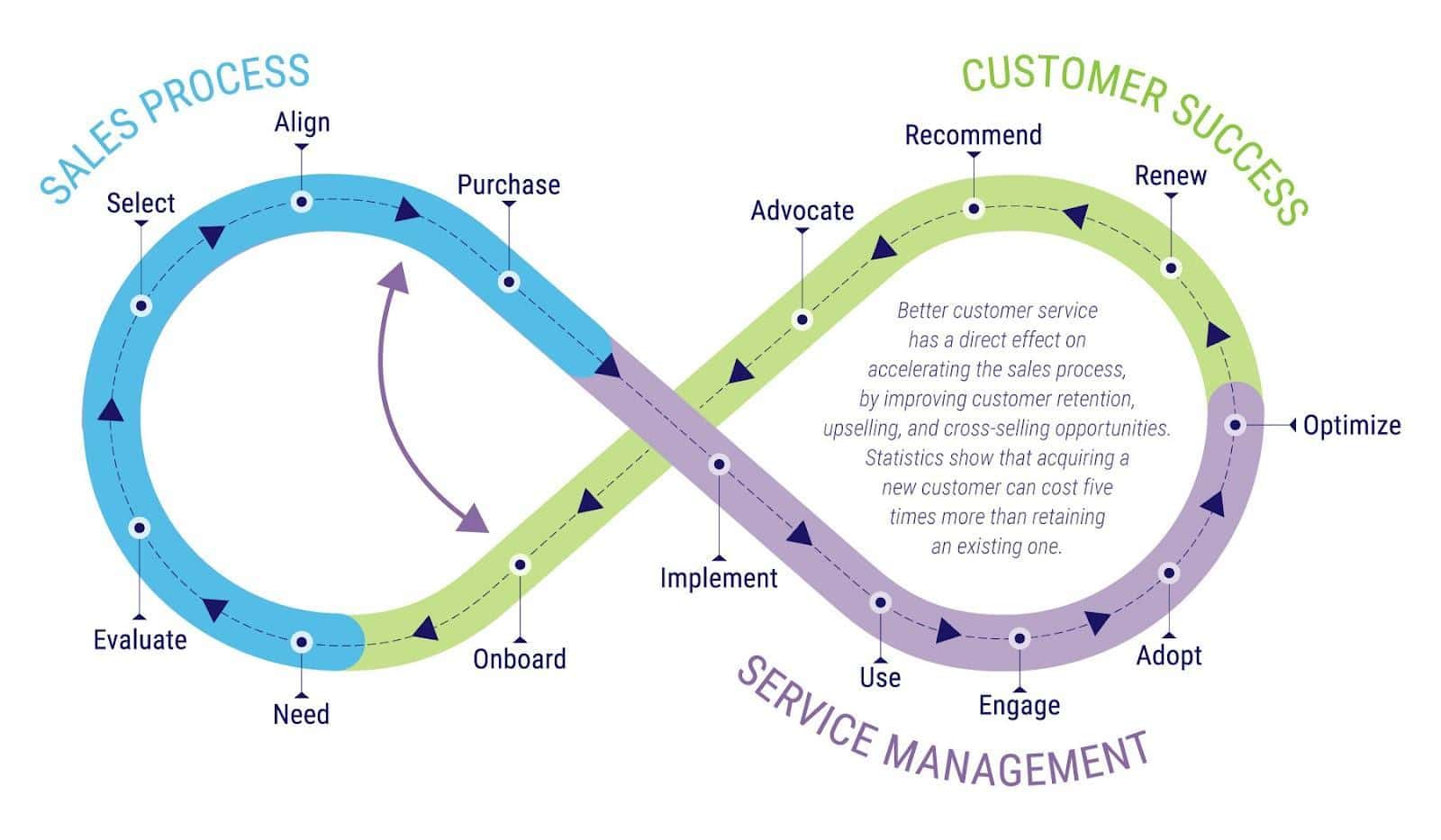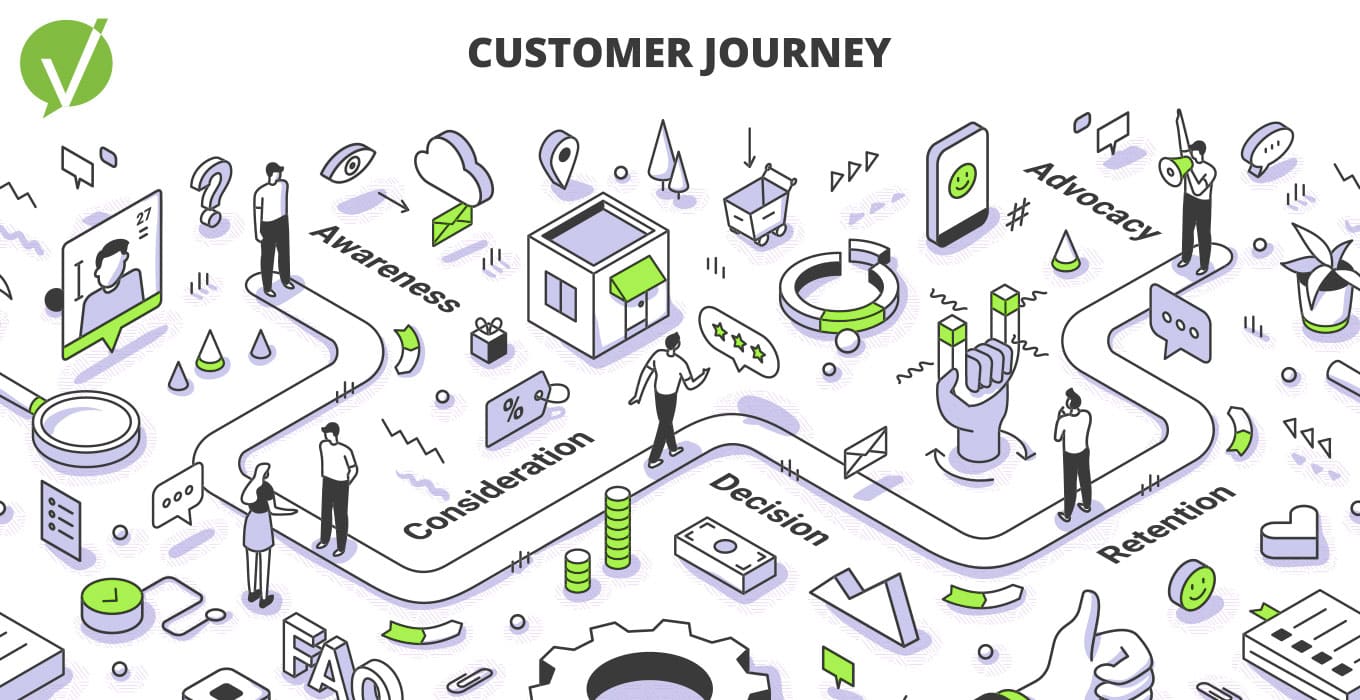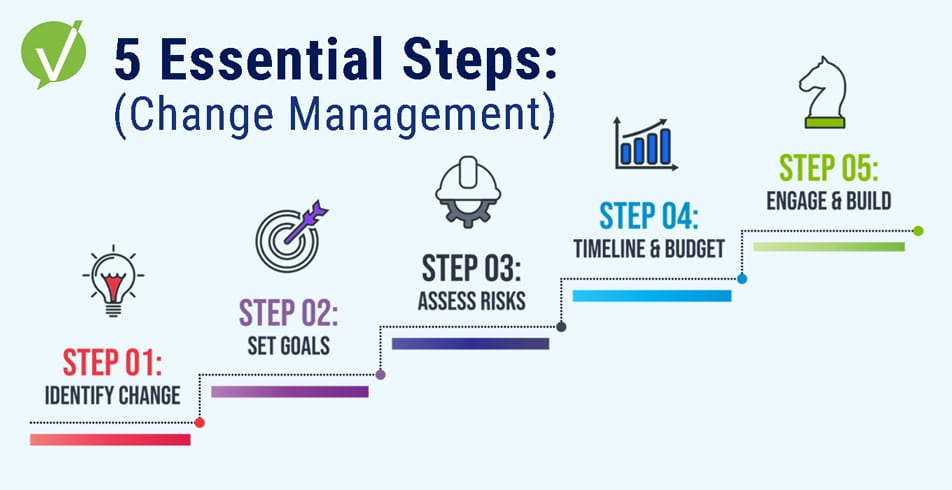Understand and Optimize the B2B Customer Journey Map
The B2B customer journey is vitally important; improving it can lead to better business relationships. The best way to enhance or kickstart a quality customer journey is to establish the right B2B customer journey map. After all, one can’t get desired results without using the right blueprint, and the linear sales funnel that most businesses focus on doesn’t consider the bigger picture.
What is the Customer Journey?
The customer journey goes beyond the traditional sales funnel, following a client’s experience through the sales process, post-sale service management, and customer success. This process leads to renewals, upsells, and cross-sells if done correctly. As a result, this customer journey is portrayed as a cycle instead of an A-to-B linear path or funnel.

This is why following the proper B2B customer journey map is essential. By reorienting toward a cycle, businesses create a customer journey that naturally creates opportunities for continued business. This raises the average lifetime value of each customer, driving up ROI throughout each step of the process.
How to Adopt the Proper B2B Customer Journey Map
Implementing the steps listed in the map above can look different depending on the company’s size. Depending on how many employees a business already has, the investment necessary to overhaul its existing system will differ, and its infrastructure needs will grow as they do.
The following table lists some basic infrastructure needs for each size business to create an optimal customer experience.
| Company Size | Basic CS Ticketing System | Dedicated CS Department | Comprehensive CSM Software Platform | Call Center (In-House or Third-Party) |
| Small Business (10-50 Employees) | ✅ | |||
| Mid-Size Business (50-250 employees) | ✅ | ✅ | ||
| Large Business (250+ employees) | ✅ | ✅ | ✅ |
Small Businesses
For businesses that are just getting started, and don’t have many employees, a basic customer support ticketing system and one or two employees dedicated to operating it is usually sufficient. This is especially true for those near the lower end for headcount (10-20 employees), as there just isn’t a need yet to build out an entire CS department in most cases.
It could also be argued that you can get away with a basic ticketing system. Still, it is sometimes good to keep an eye on the future and look at more comprehensive systems to scale quickly as long as your chosen system has a manageable administrative overhead and is not built to scale as you do.
Now, there are exceptions. Depending on the industry, the jump to mid-size can take place a bit earlier than 50 employees, especially those that serve many customers or require much labor for each customer. In cases like these, a business’s needs may replicate those of a mid-size business a bit earlier, and they should consider building out at least a small CS team and equipping them with a more comprehensive CSM platform.
Mid-Size Businesses
When evolving into the mid-size, businesses must create a dedicated customer support team and provide the tools they need to succeed at the next level. This means adopting a comprehensive CSM platform that can handle ticket routing, workflow organization and customization, customer data organization, and even ITSM functions for internal support needs.
This is because the growing clientele demands some logistical automation to ensure that each client is given the attention and support they deserve and that each employee has quality information and task management at their fingertips.
Large Businesses
Large businesses essentially have the needs of a mid-size business but at an exponentially more extensive scale. This is where contracting with, or developing in-house, a call center is vital to ensuring that the ever-expanding volume of incoming calls is handled promptly.
If the business chose the right CSM software when they were mid-size, this platform should grow with them and can even be used to equip and train call center associates so that service quality isn’t diluted as the operation grows.
Vivantio offers a CSM platform that can handle all of these demands and grows alongside the firms that use it.
Improve the B2B Customer Journey with Vivantio
While each of the benefits listed in this article works wonders for businesses, they won’t help if managers choose a platform that doesn’t offer all of the necessary features. Vivantio offers a cutting-edge customer service software platform that offers everything listed and more, including:
- Endless integrations to make implementation easy
- Automatic ticket routing to ensure every ticket gets to the proper agent
- Workflow designer tool that allows managers to customize the framework of their CS operations without any technical knowledge required
- White-label service portals so businesses can maintain a cohesive brand throughout the service process
- A holistic view of each client to ensure that no agent is left without vital information













